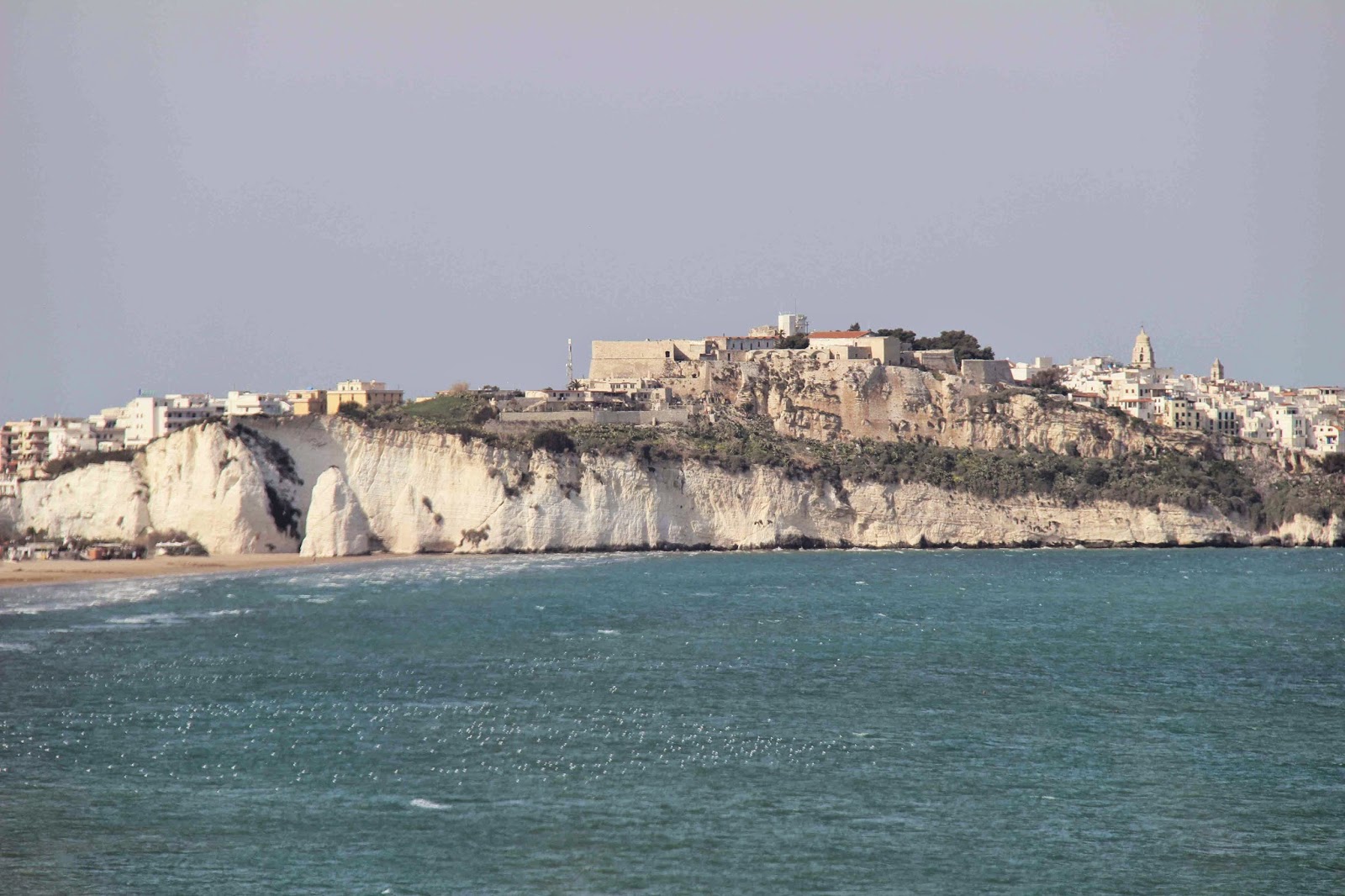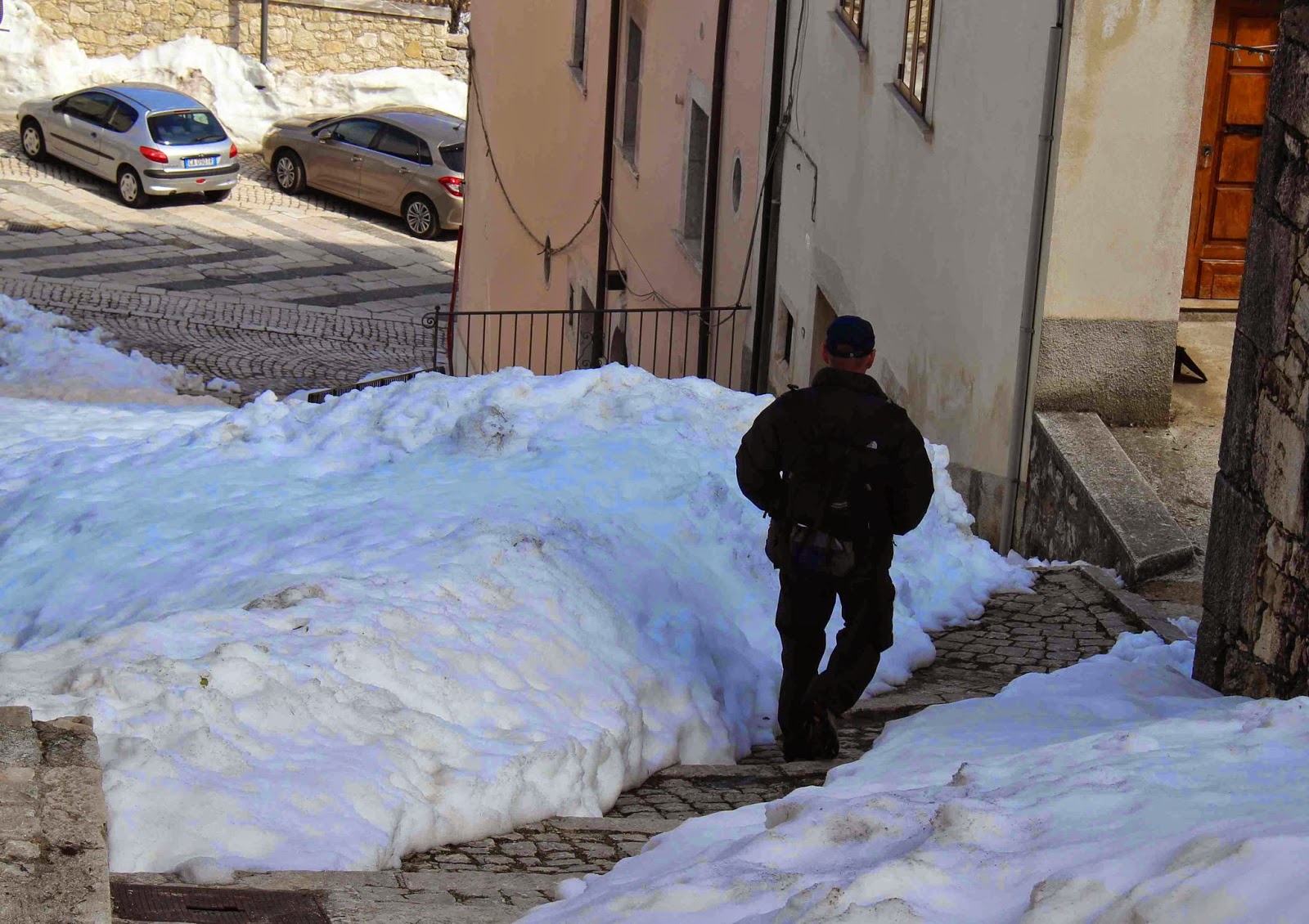 In June 2008 we did a day
trip from Rome and intended to visit Pompeii and Naples. The day did not go according
to plan. A strike meant that the Pompeii site was closed and after a trip to Mt
Vesuvius we ran out of both time and energy and never made it to Naples. You
can read about that day here.
We were determined to try again.
In June 2008 we did a day
trip from Rome and intended to visit Pompeii and Naples. The day did not go according
to plan. A strike meant that the Pompeii site was closed and after a trip to Mt
Vesuvius we ran out of both time and energy and never made it to Naples. You
can read about that day here.
We were determined to try again.  We arrived at Pompeii early,
checked our bags into our hotel and entered the huge archeological site before 10am.
The Roman city captured in time by the volcanic eruptions of 79AD was worth
coming back to see. The city was tragically covered with metres of ash and lava
and lay buried for fifteen centuries. Exploration and investigation, particularly
over the last 250 years, has revealed the size, scope, artistry and humanity of
the first century Roman world. Most poignant are the plaster casts of the victims,
which have been created by filling the voids in the ash left by human bodies.
They represent the exact position of these people at the time of their death. Fountains,
temples, villas and shops can all be viewed and compared with contemporary counterparts
today.
We arrived at Pompeii early,
checked our bags into our hotel and entered the huge archeological site before 10am.
The Roman city captured in time by the volcanic eruptions of 79AD was worth
coming back to see. The city was tragically covered with metres of ash and lava
and lay buried for fifteen centuries. Exploration and investigation, particularly
over the last 250 years, has revealed the size, scope, artistry and humanity of
the first century Roman world. Most poignant are the plaster casts of the victims,
which have been created by filling the voids in the ash left by human bodies.
They represent the exact position of these people at the time of their death. Fountains,
temples, villas and shops can all be viewed and compared with contemporary counterparts
today.  By 1.20pm we were on a local
train and on our way to Naples, Italy’s third largest city. The humble and rather
dilapidated local train winds through the outer suburbs of Naples, delivering
stunning views of Naples Harbour on our left and Mt Vesuvius on the right. This
gritty, bustling and complex city lived up to our expectations. We enjoyed
walking down an incredibly narrow street running east to west and dividing the
city. Huge crowds of locals create a carnival-like atmosphere. People of all
ages are enjoying the sun, the shops and the food on a balmy Saturday
afternoon. To get to Naples early we had postponed lunch and that proved to be a
good decision. We knew that Naples has a reputation for great pizza and ice-
cream but our surprise treat was a different local fast food specialty. From a
creatively decorated shop called il
Cuoppo we ordered a wicked fry-up of deep fried zucchini, zucchini flowers,
dumplings, polenta and ‘potate’ all served in a cardboard cone. We followed a
crowd of tourists into a large but rather drab looking church, Gesu Nuove. We were amazed to see that from the
inside the church was one of the finest and most elegant churches we had ever
seen. Our day ended with a quick look around the harbour, a tram ride back to
the station and a train back to Pompeii.
By 1.20pm we were on a local
train and on our way to Naples, Italy’s third largest city. The humble and rather
dilapidated local train winds through the outer suburbs of Naples, delivering
stunning views of Naples Harbour on our left and Mt Vesuvius on the right. This
gritty, bustling and complex city lived up to our expectations. We enjoyed
walking down an incredibly narrow street running east to west and dividing the
city. Huge crowds of locals create a carnival-like atmosphere. People of all
ages are enjoying the sun, the shops and the food on a balmy Saturday
afternoon. To get to Naples early we had postponed lunch and that proved to be a
good decision. We knew that Naples has a reputation for great pizza and ice-
cream but our surprise treat was a different local fast food specialty. From a
creatively decorated shop called il
Cuoppo we ordered a wicked fry-up of deep fried zucchini, zucchini flowers,
dumplings, polenta and ‘potate’ all served in a cardboard cone. We followed a
crowd of tourists into a large but rather drab looking church, Gesu Nuove. We were amazed to see that from the
inside the church was one of the finest and most elegant churches we had ever
seen. Our day ended with a quick look around the harbour, a tram ride back to
the station and a train back to Pompeii.
In 2008 Pompeii and Naples defeated
us. Today we returned in triumph, albeit rather weary after 26,000 Fitbit steps
(14kms of walking).
















































